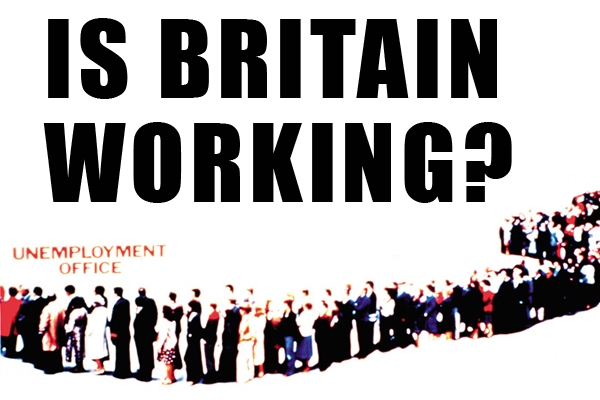Today’s employment figures don’t contain much new to shout about. The number of people in work — although it rose by 100,000 on the previous quarter — is actually down very slightly from last month’s record high (but still above the pre-recession peak, just). Unemployment fell by 49,000 from Q2 to Q3, although that’s well within the Labour Force Survey’s margin of error (so we can’t be certain that it fell at all). The best news in today’s figures — from the government’s point of view — is probably that the headline unemployment rate is now 7.8 per cent, very slightly below the 7.9 per cent rate when the coalition took office (though again, it’s worth remembering that the margin of error on that figure is +/– 0.3 percentage points).
The big picture, then, is the same as last month: overall employment has fully recovered from the recession. But the composition of the labour force has changed dramatically. The government can boast that there are 601,000 more people in work now than were at the last election, but almost half of that increase has come in part-time workers:
In fact, 621,000 fewer people are working full-time than were in April 2008, and 625,000 more are working part-time. Despite that, the total number of hours worked has risen by 3.2 per cent — from 915.9 million a week in May 2010 to 945.3 million now — and is also back to pre-recession levels. That’s because both full-time and part-time workers are working more hours a week on average (the average full-time worker now puts in 37 hours and 32 minutes a week, compared to 37 hours and 4 minutes before the recession).
But it seems people are working longer for less. Earnings have failed to keep up with inflation: the average rose by 1.7 per cent in the last year, while prices went up by 2.2 per cent (by CPI) and 2.6 per cent (on RPI). Average earnings are now 7 per cent lower in real terms than they were five years ago:
This is further evidence that, as Citi’s Michael Saunders argued in September:
‘The resilience of employment is not a sign of hidden economic strength: in aggregate, people are pricing themselves into work through weakness in pay and the shift to less secure and less well paid forms of work (self-employment, part-time work, temporary jobs).’










Comments